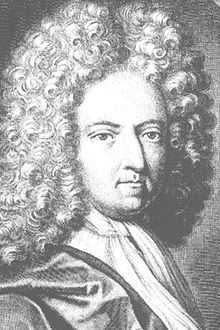A Journal of the Plague Year
 Title page of the original edition in 1722 | |
| Author | Daniel Defoe |
|---|---|
| Country | United Kingdom |
| Language | English |
| Genre | Historical novel |
| Publisher | E. Nutt |
Publication date | 1722 |
| ISBN | NA |
A Journal of the Plague Year is a novel by Daniel Defoe, first published in March 1722.
The novel is a fictionalised account of one man's experiences of the year 1665, in which the Great Plague struck the city of London. The book is told roughly chronologically, though without sections or chapter headings.
Although it purports to have been written only a few years after the event, it actually was written in the years just prior to the book's first publication in March 1722. Defoe was only five years old in 1665, and the book itself was published under the initials H. F. The novel probably was based on the journals of Defoe's uncle, Henry Foe.
In the book, Defoe goes to great pains to achieve an effect of verisimilitude, identifying specific neighborhoods, streets, and even houses in which events took place. Additionally, it provides tables of casualty figures and discusses the credibility of various accounts and anecdotes received by the narrator.
The novel often is compared to the actual, contemporary accounts of the plague in the diary of Samuel Pepys. Defoe's account, although fictionalized, is far more systematic and detailed than Pepys's first-person account.
Moreover, it may be compared to the description of the plague in Alessandro Manzoni's The Betrothed (orig. Italian: I Promessi Sposi). Despite of some similarities (for example, both novels were written many years after the end of the plague), the two writers used different techniques: Defoe wrote a work full of detail but used a detached tone, while Manzoni was not only able to reconstruct the general atmosphere of the pestilence-stricken Milan, but also analysed individual responses to the plague with a poetic sensitivity of his own.
Debate over the book's classification as a novel
Whether the Journal can properly be regarded as a true novel has been disputed.[1] Unlike novels such as Robinson Crusoe or Moll Flanders, the Journal of the Plague Year was initially read as a work of non-fiction.[2] By the 1780s the work's fictional status was well-known, but debate continued as to whether Defoe could truly be regarded as the work's author, rather than merely its editor.[3] One modern literary critic has asserted that 'the invented detail is... small and inessential', while Watson Nicholson – writing in 1919 – argued that the work can be regarded as 'authentic history'.[4] Other literary critics have argued that the work can indeed be regarded as a work of imaginative fiction, and thus can justifiably be described as a 'historical novel'.[5]
Adaptations in other media
In 1945 the syndicated radio program The Weird Circle adapted the novel into a condensed 30-minute drama.
The 1980 Mexican Movie El Año de la Peste (The year of the plague), directed by famous Mexican director Felipe Cazals with a screenplay written by Gabriel Garcia Marquez, was based on A Journal of the Plague Year.
In later culture
- In François Truffaut's 1966 film Fahrenheit 451, a copy of A Journal of the Plague Year can be seen during the book burning scene at Guy Montag's house.
- In the Daria telemovie Is It Fall Yet?, Daria's sister Quinn borrows A Journal of the Plague Year from Daria when attempting to avoid her mother.
- The Oscar nominated short film Periwig Maker is based on A Journal of the Plague Year.
References
- ↑ Brown, H. (1996). "The Institution of the English Novel: Defoe's Contribution". NOVEL: A Forum on Fiction 29 (3): 299–318. doi:10.2307/1345591., p. 311.
- ↑ Bastian, F. (1965). "Defoe's Journal of the Plague Year Reconsidered". The Review of English Studies 16 (62): 151–173. doi:10.2307/513101.
- ↑ Bastian, F. (1965). "Defoe's Journal of the Plague Year Reconsidered". The Review of English Studies 16 (62): 151–173. doi:10.2307/513101.
- ↑ Zimmerman, E. (1972). "H. F.'s Meditations: A Journal of the Plague Year". PMLA 87 (3): 417–423. doi:10.2307/460900., Bastian, F. (1965). "Defoe's Journal of the Plague Year Reconsidered". The Review of English Studies 16 (62): 151–173. doi:10.2307/513101. pp. 152, 172
- ↑ Bastian, F. (1965). "Defoe's Journal of the Plague Year Reconsidered". The Review of English Studies 16 (62): 151–173. doi:10.2307/513101. pp. 153
External links
- A Journal of the Plague Year at Project Gutenberg
-
 A Journal of the Plague Year public domain audiobook at LibriVox
A Journal of the Plague Year public domain audiobook at LibriVox - Dermot Kavanagh's article on the London Fictions site about the London of 'A Journal of the Plague Year'
| ||||||||||||||||||||||||
